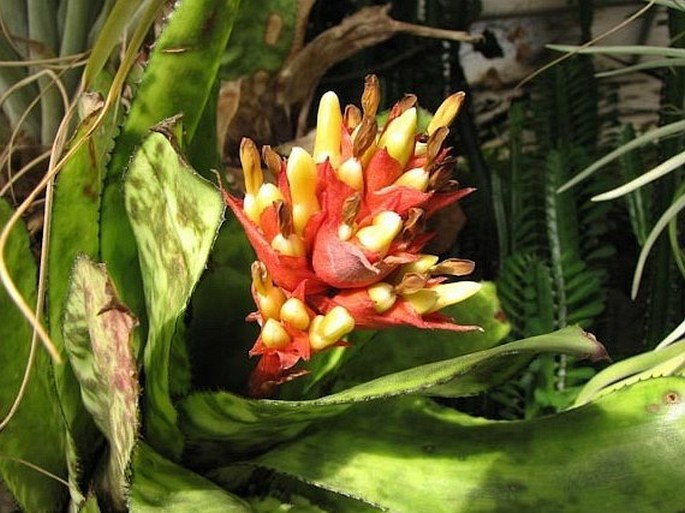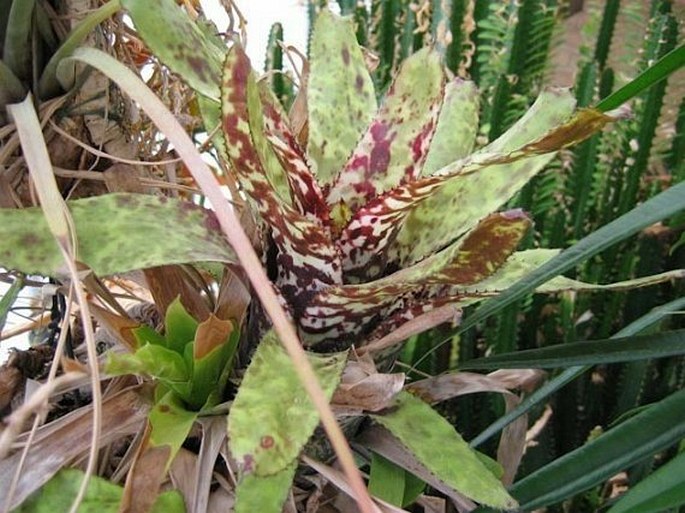Family: Bromeliaceae Juss.

Distribution: Endemic to small area in Brazil in the state of Espirito Santo (Mata Atlântica).
Ecology: Epiphytic and terrestrial in shade seasonally semideciduous forests, in elevations 100–1000 m.
Description: Monocarpic, medium size water tank bromeliad, 15–20 leaves spreading to about 40–50 cm diameter, leaves 15 cm long, 7–9 cm wide, green with darker blotches on top and dark purple spots beneath, creating zebra like bands. Inflorescence on a 6 mm thick spike, greenish to pink to red, about 30 cm long, barely clearing the rosette, scape bracts pink to red, 6 cm long, broadly apiculate; panicle of 10–20 fowers is ovoid to pyramidal, 7 cm long; flower bracts pink to red, 10–15 mm long, broadly apiculate, sepals 11 mm long, yellow, free, mucronulate (as all Aechmeas), petals yellow, 20 mm long, 4 mm wide, blunt tipped; ovary 10 mm long, elliptic, greenish white. Fruit is a white berry.
Notes: As this is a stoloniferous plant, it grows well as an epiphyte and after flowering it produces young plants, which attach freely to the substrate, be it branches, roots or any other medium. Named after city of Orlando, Fla., where it was first cultivated by its discoverer Mulford Foster.



These images were taken in culture (Canada).


